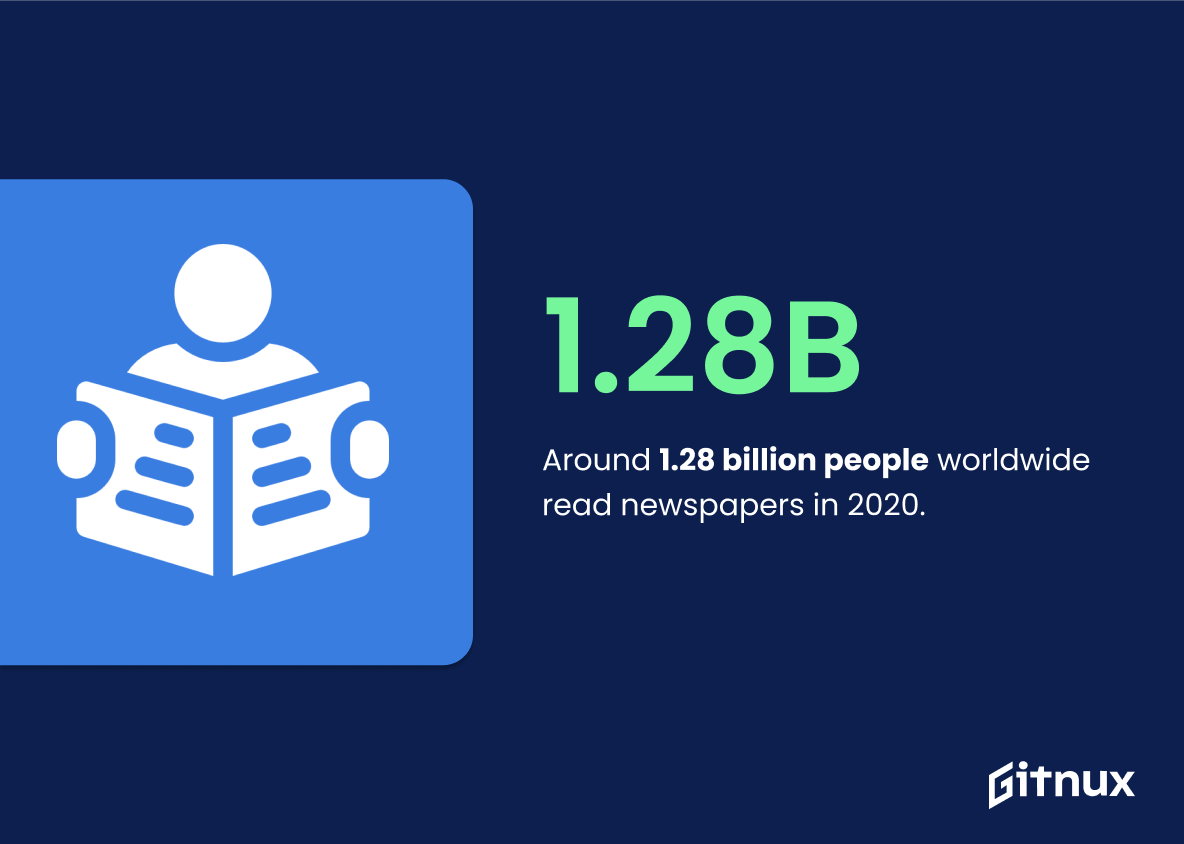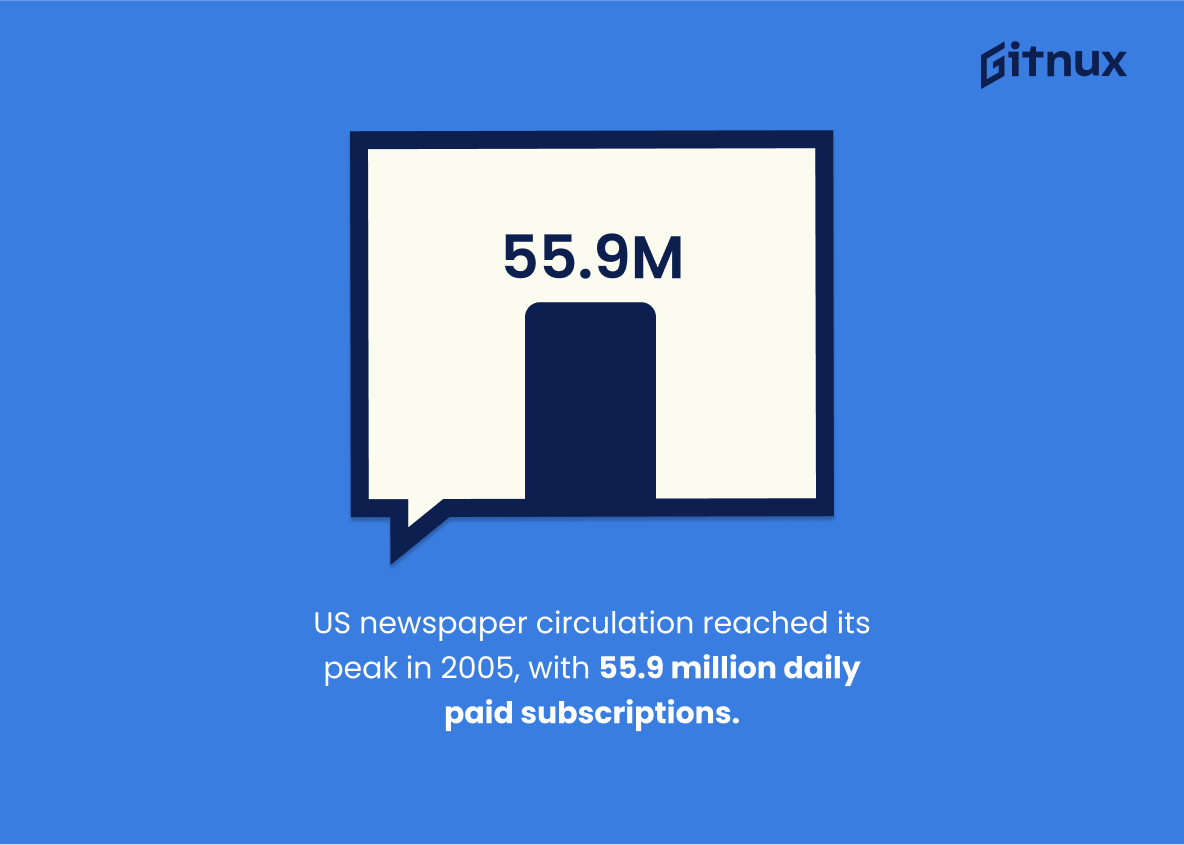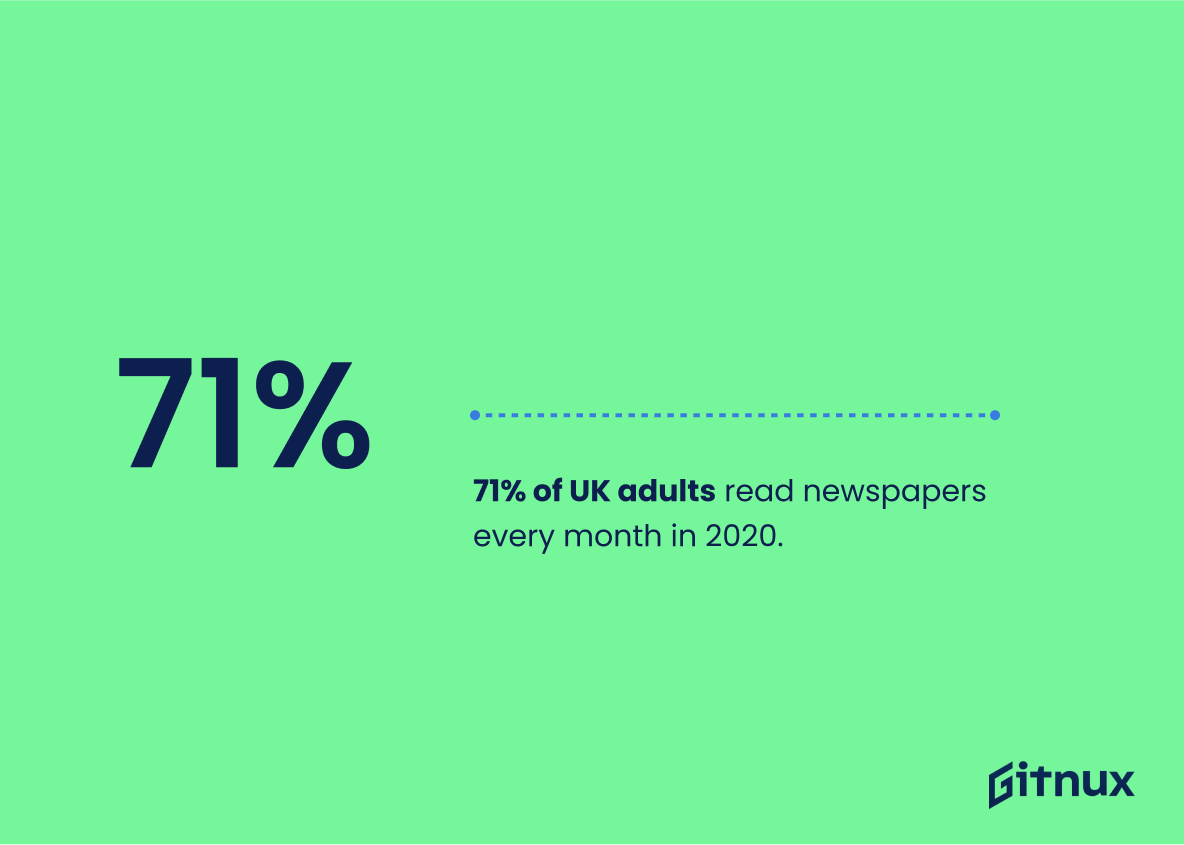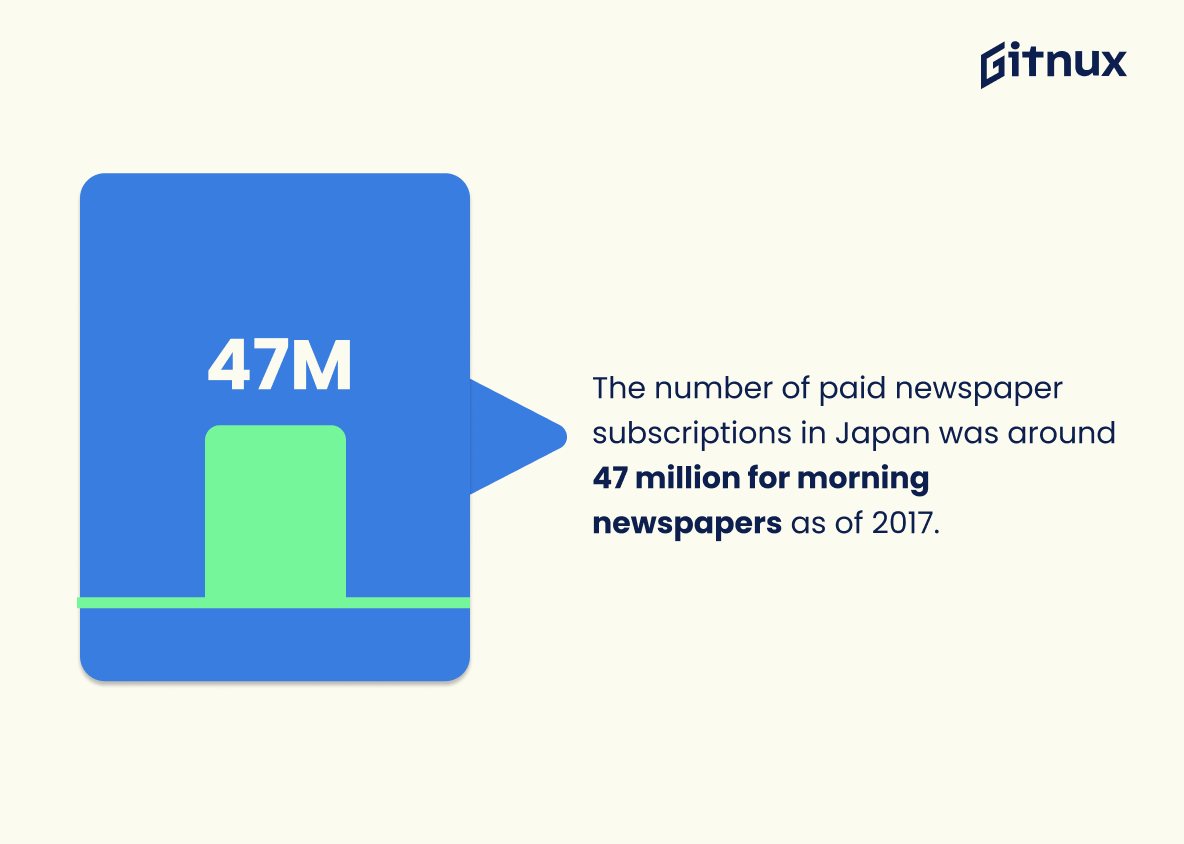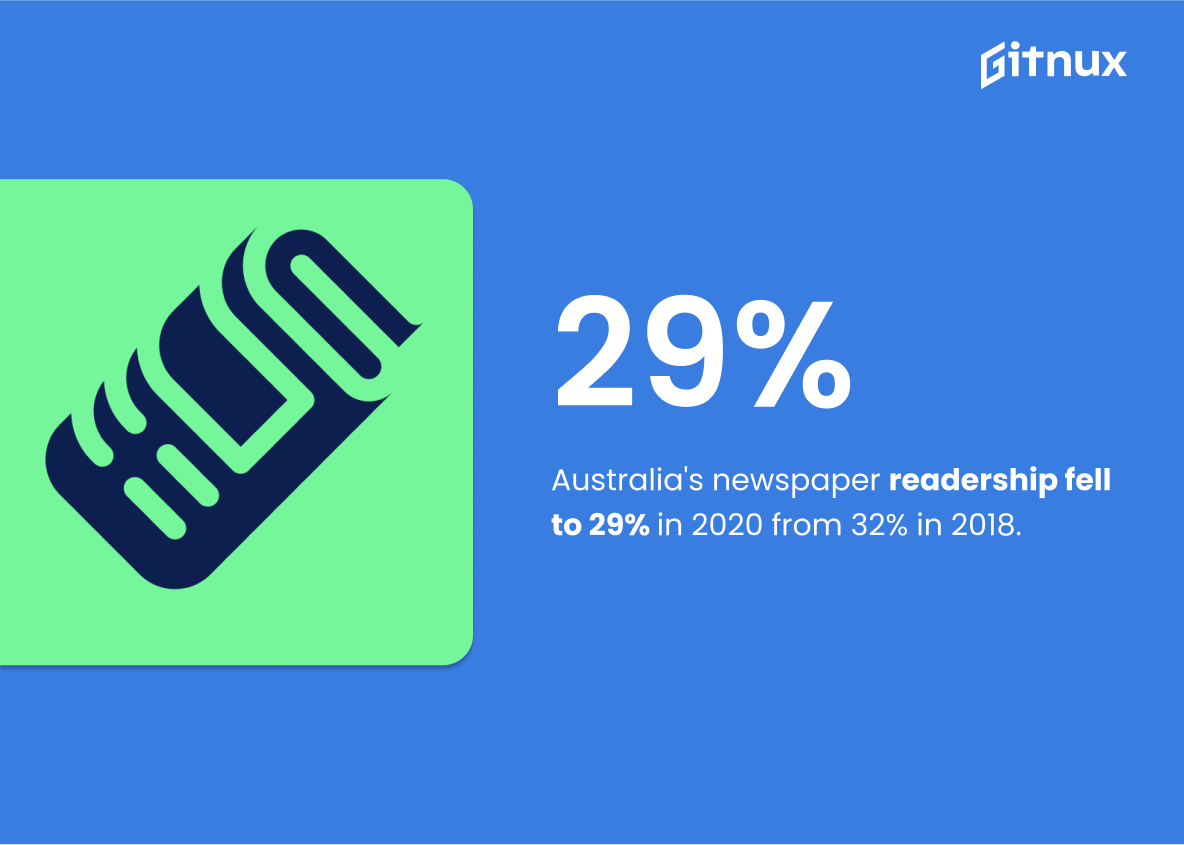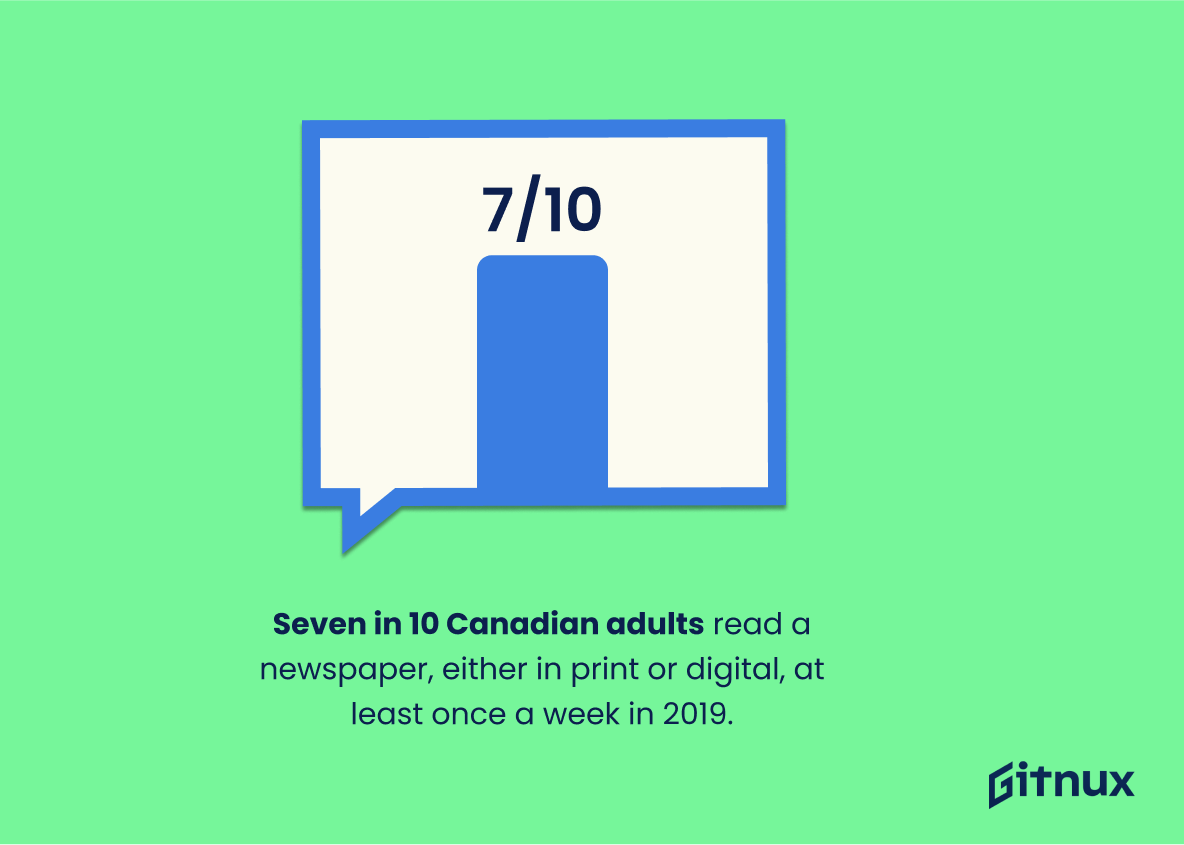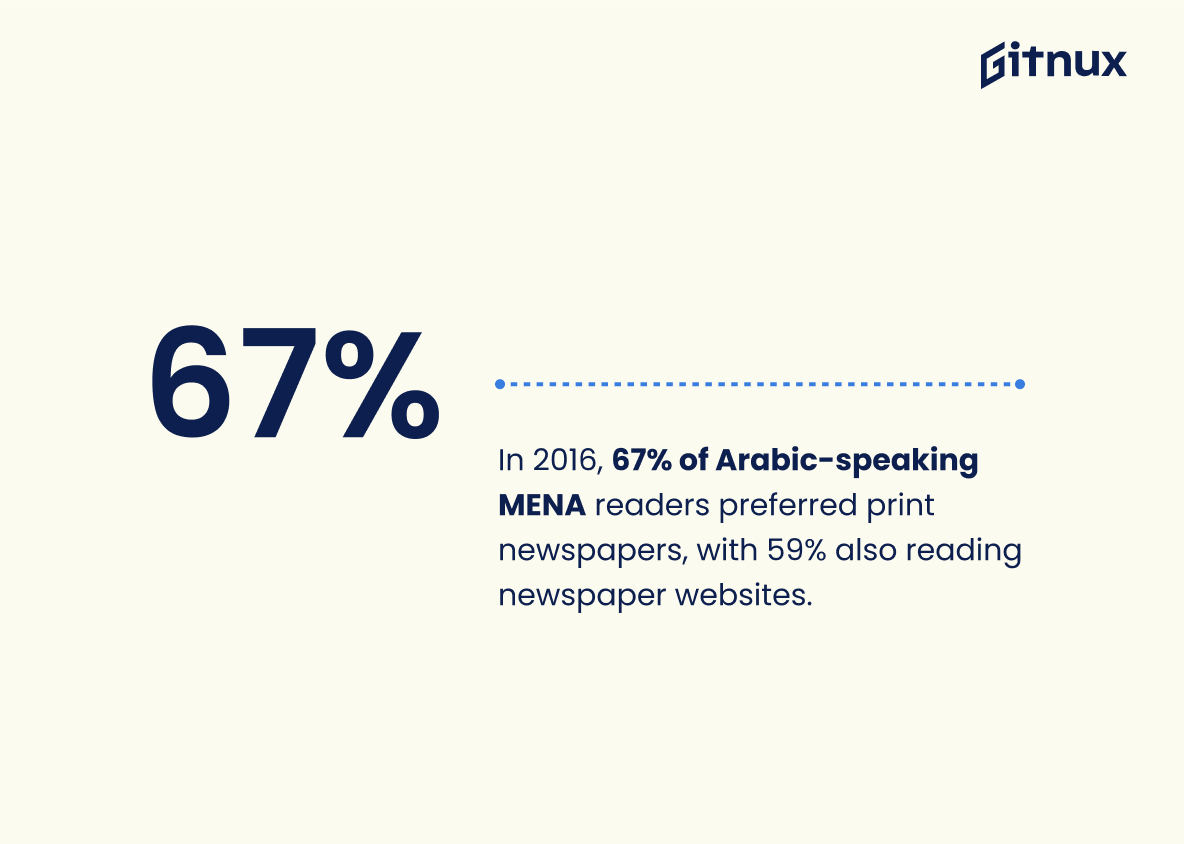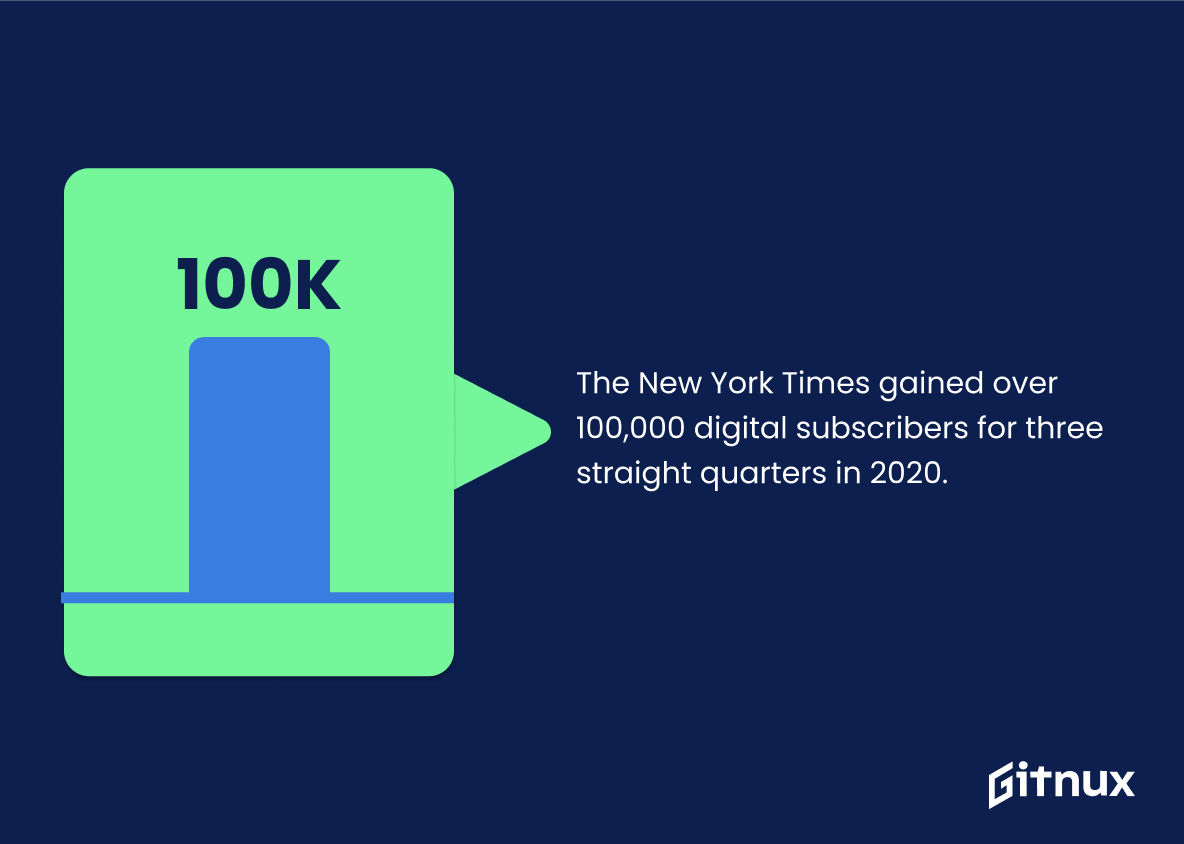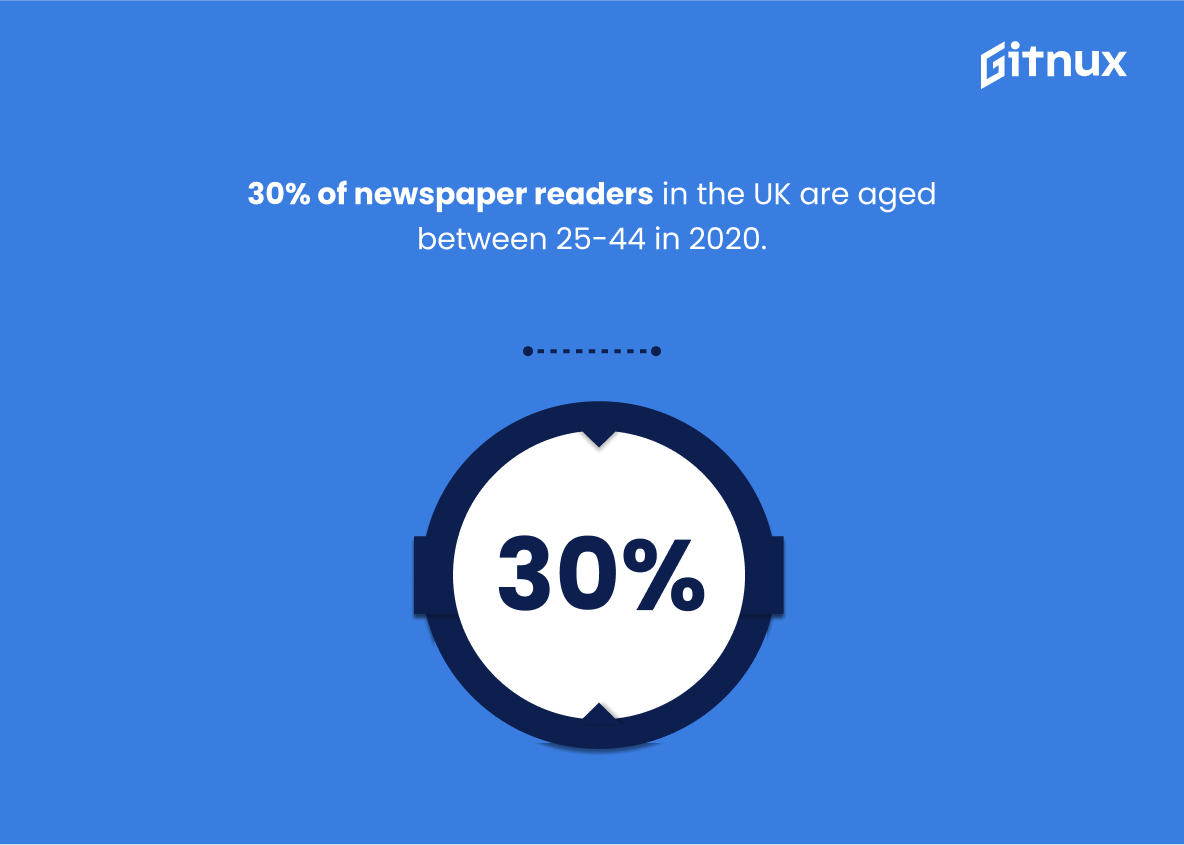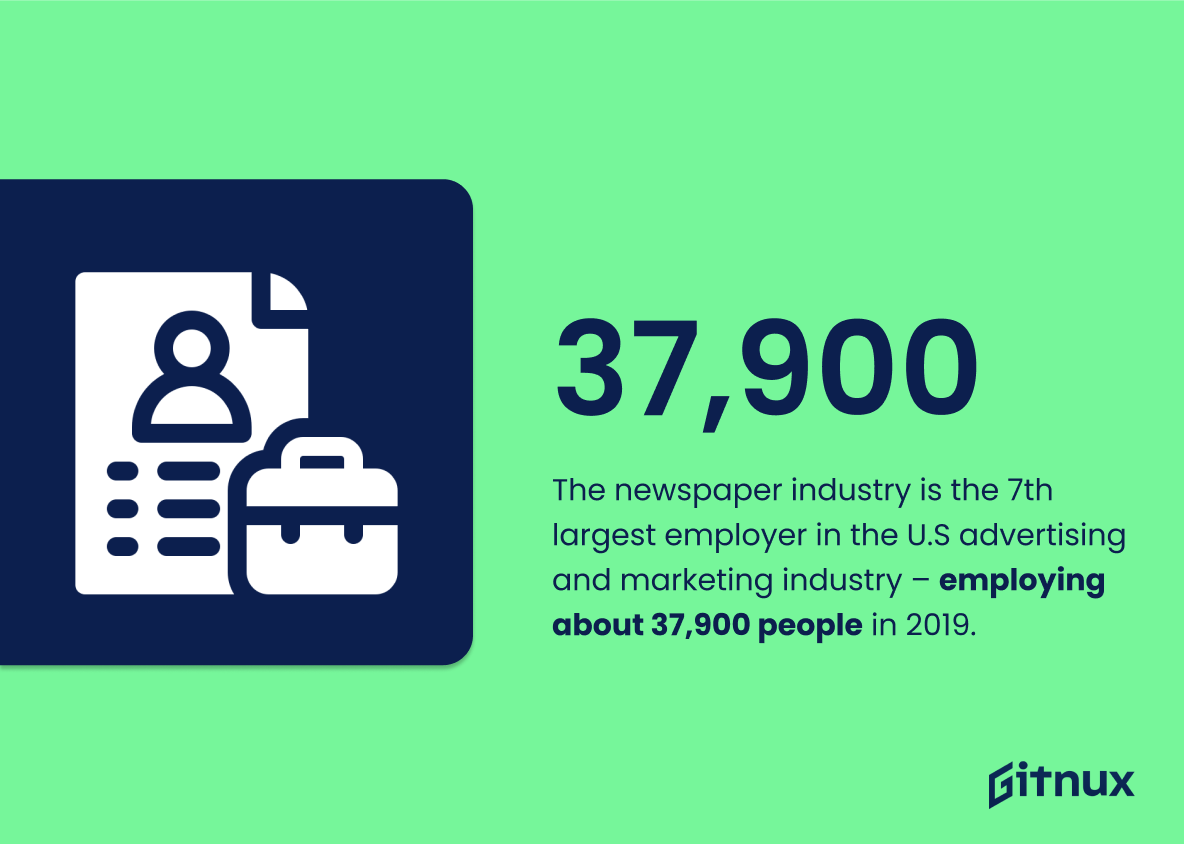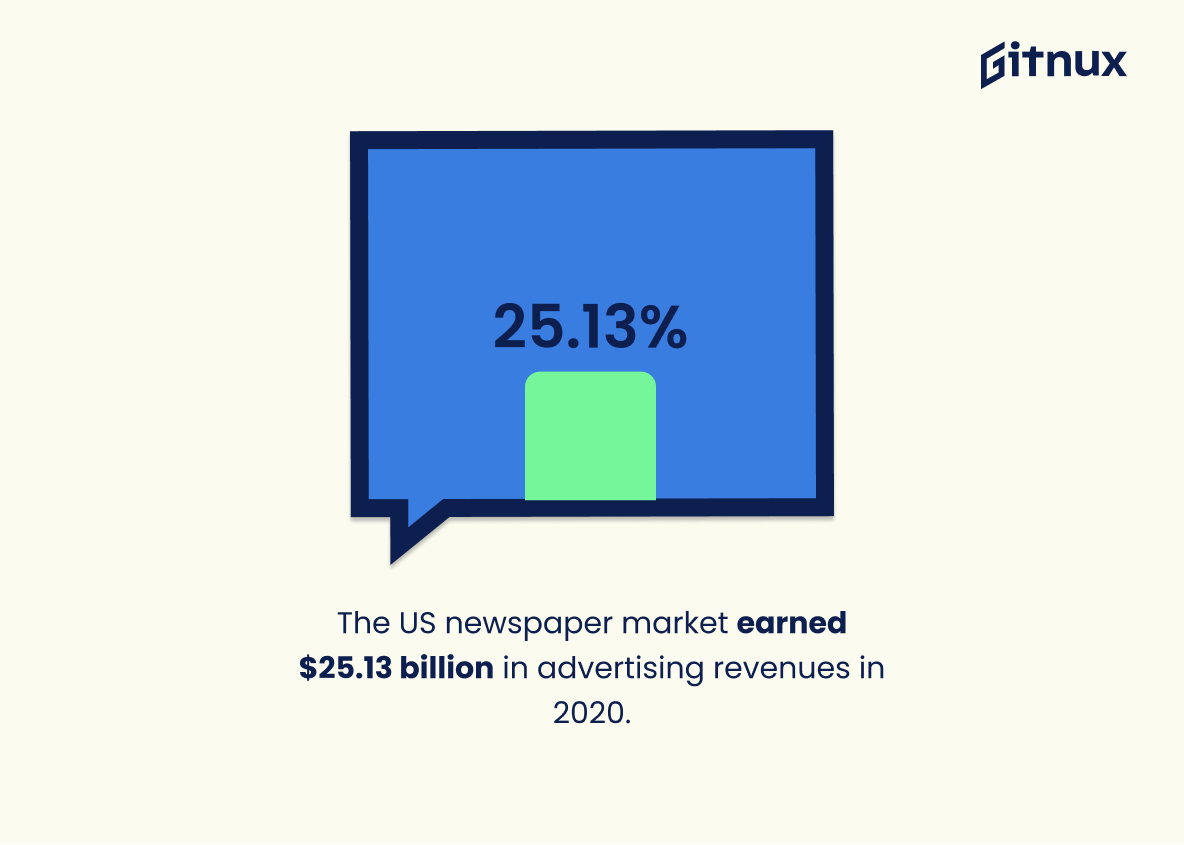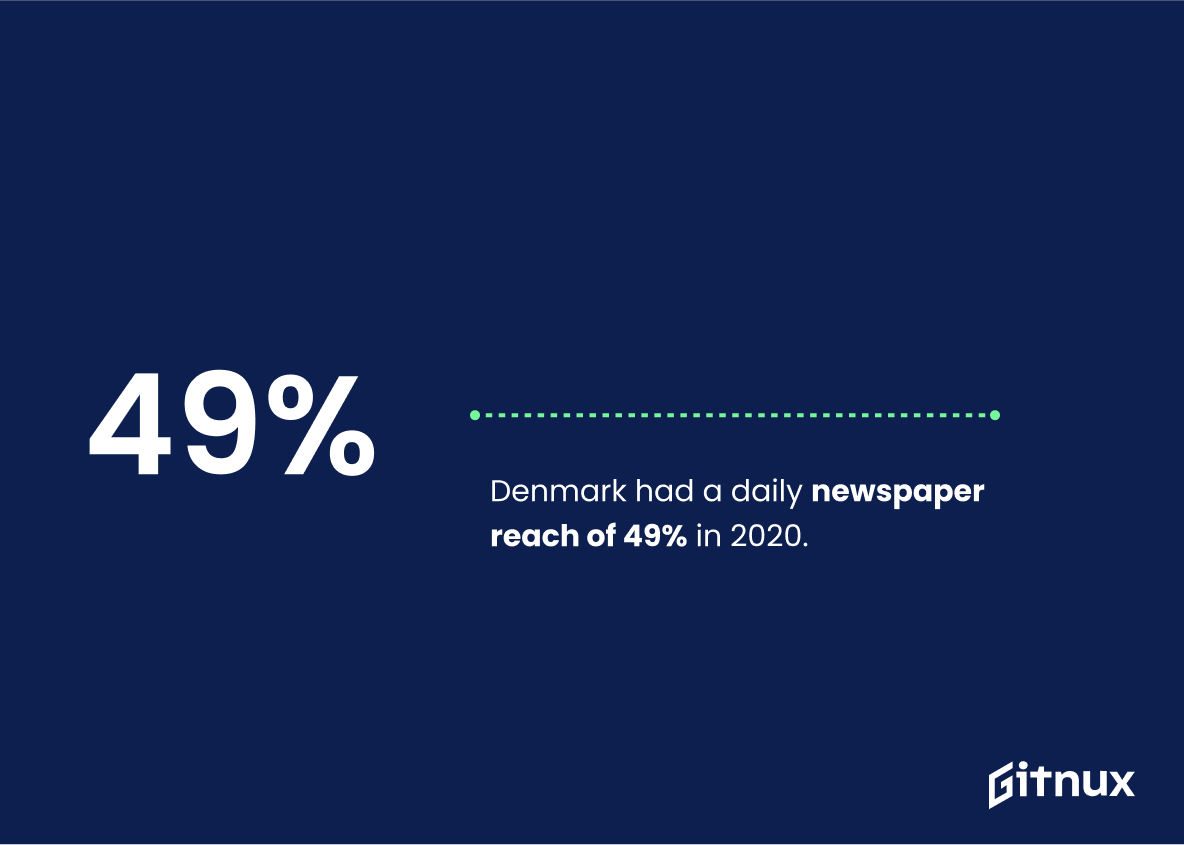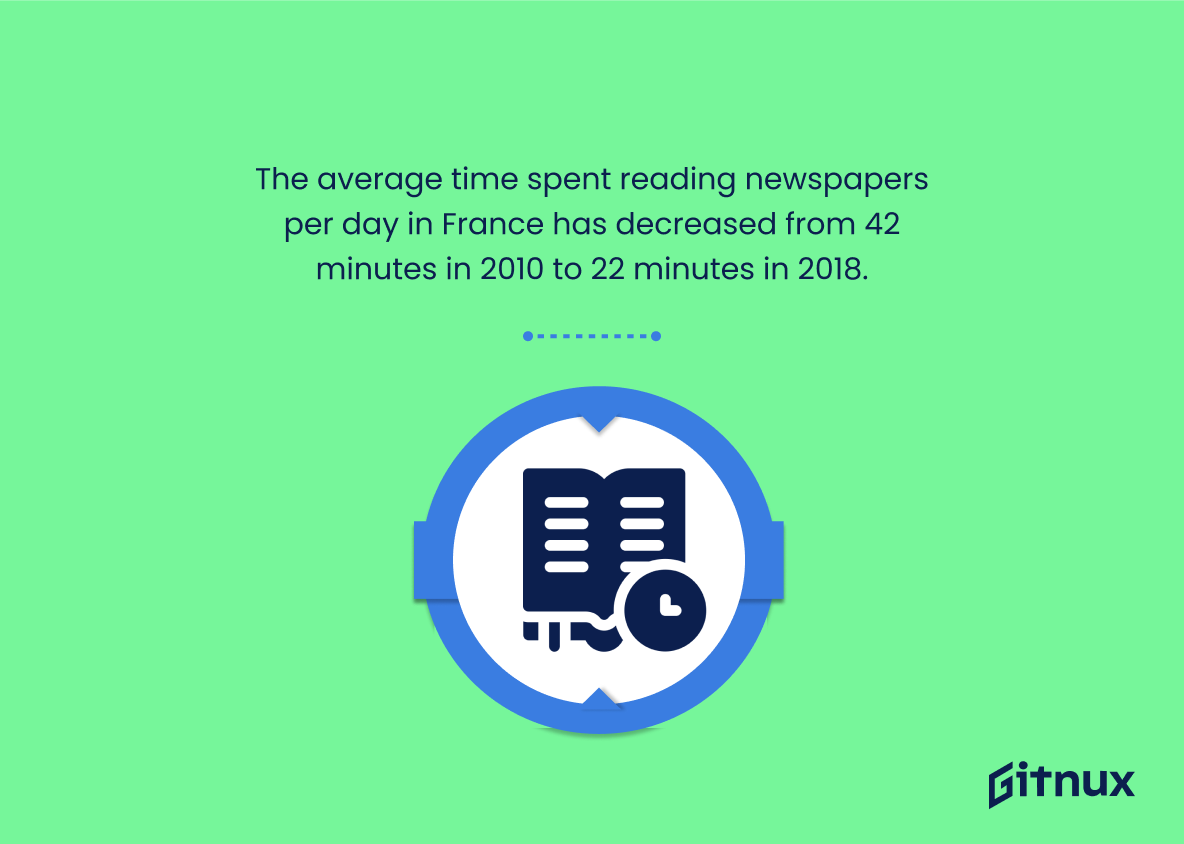In the dynamic era of digital consumption, newspapers have had a fascinating journey of evolution and adaptation. This blog post delves deep into the world of newspaper statistics, shedding light on intriguing facts and figures that define this enduring medium of information. Grasp a fresh perspective as we unveil compelling data about newspaper reach, circulation, readership demographics, and digital transition. Whether you are an advertiser, a journalist, a student, or simply a curious mind, these insights offer a comprehensive overview of the newspaper landscape, both in their print and online avatars.
The Latest Newspaper Statistics Unveiled
Around 1.28 billion people worldwide read newspapers in 2020.
In the carousel of the world’s media consumption, the fact that a staggering 1.28 billion people globally have their fingertips smeared with fresh ink of newspapers in 2020, punctuates the narrative with an intriguing plot twist. Notwithstanding the digital revolution, it underscores the still-burgeoning vitality and staying power of newspapers, asserting their grip on a significant portion of the world’s populace. In the realm of newspaper statistics, this figure isn’t just a statistic – it’s a proclamation, affirming that the pulse of traditional print media is far from fading away. It serves as a beacon of relevance for advertisers, publishers, sociologists, and anyone else taking a deep dive into the complex tapestry of global media consumption. It’s a stark act of defiance against the march of digitalization, a thrilling cliffhanger in the on-going saga of newspapers.
US newspaper circulation reached its peak in 2005, with 55.9 million daily paid subscriptions.
Highlighting the zenith of US newspaper readership in 2005, with a staggering 55.9 million daily paid subscriptions, offers a remarkable point of reference in a chronicle of Newspaper Statistics. This is a vivid reminder of a time when newsprint reigned supreme, a pinnacle symbolic of an era where the daily newspaper, carefully folded and clutched in millions of hands, was a staple of American mornings. Drawing attention to this statistic allows us to embark on a journey through the past, present, and potentially future trends of newspaper consumption, thereby providing a stark contrast to the evolving digital landscape that has redefined traditional journalism.
71% of UK adults read newspapers every month in 2020.
In the bustling tapestry of the UK’s media landscape, one might expect the allure of digital formats to have significantly dented the appeal of print media. Yet, the resilient heartbeat of newspapers is far from silent. As the spotlight illuminates the statistic of 71% of UK adults engaging with newspapers monthly in 2020, its significance to the narrative cannot be understated. It provides a compelling tableau of newspapers’ enduring ability to captivate one’s interest and commitment, serving as a stout affirmation of their ongoing relevance. As the centerpiece of our discussion about newspaper statistics, this percentage boldly punctuates the dialogue, reminding us of the considerable stature and influence newspapers continue to hold within the UK’s communication milieu. It delicately unravels the story of readers’ persistent engagement with physical print and underscores the importance of newspapers as a tool of information and engagement in contemporary society.
The number of paid newspaper subscriptions in Japan was around 47 million for morning newspapers as of 2017.
In a digital age where online news consumption is on the rise, this striking figure of 47 million paid morning newspaper subscriptions in Japan as of 2017 underscores the enduring strength of traditional media formats in certain markets. It unequivocally demonstrates that the culture of print news consumption remains deeply entrenched in Japanese society, offering a fascinating contrast to global trends. For anyone examining newspaper statistics, this figure provides a compelling case study in the persistence of print media, reminding us not to overlook or underestimate its influence despite the digital media surge.
In 2019, 28% of Americans often got news from a newspaper.
Shedding light on the subtle truth behind the transfiguration in information dissemination, this intriguing statistic showcases that a substantial 28% of Americans remained loyal to the traditional newspaper medium for their news in 2019. This trend towards a preference for print, prevalent in more than a quarter of the population, becomes the quintessence of our discussion on Newspaper statistics, providing a concrete digit to anchor our exploration and subsequent analysis. Furthermore, this statistic assumes even more significance as it subtly challenges the pervasive notion of the “dying newspaper”, offering a counter-narrative that points to the persistent and perhaps underrated relevance of this platform in the digital age. As we delve into the realm of Newspaper statistics, this figure serves as our compass, directing our understanding of contemporary consumer behavior and preferences in relation to news consumption.
In Australia, readership of print newspapers has been falling, down to 29% in 2020 from 32% in 2018.
Delving into the realm of Newspaper Statistics, an intriguing transformation strikes the spotlight. The Australian readership of traditional print newspapers has embarked on a downward journey, receding to a position of 29% in 2020, a drop from the 32% foothold in 2018. These figures elucidate a seismic shift in consumer preferences and consuming habits– a tale of physical newspapers slowly giving way to digital platforms. It marks the changing topography of media consumption, pointing out the escalating relevance of online sources over print, which any keen observer of media trends may find captivating. This, indeed, serves as a harbinger of what we might expect in other parts of the globe, a tectonic shift reflecting the age of digitalization in the media landscape.
Seven in 10 Canadian adults read a newspaper, either in print or digital, at least once a week in 2019.
Imagine navigating through a maze, where each turning point represents a different type of media. The quote “Seven in 10 Canadian adults read a newspaper, either in print or digital, at least once a week in 2019” serves as a beacon of light in this labyrinth. It provides evidence that, despite the pervasive influence of social media and other modes of communication, newspapers remain a widely utilized and relevant source of info among Canadian adults. This revelation is not merely enlightening; it breathes life into a blog post about newspaper statistics, imparting both validity and understanding about the ongoing relevance and reach of newspapers in Canada’s media landscape.
For Arabic-speaking Middle East and North Africa, 67% of readers prefer to read print newspapers, with 59% also reading newspaper’s websites in 2016.
Undoubtedly, the aforementioned statistic presents an intriguing dimension in the realm of newspaper consumption in the Arabic-speaking Middle East and North Africa. It uncovers a sturdy bond with traditional print media, revealing that over two thirds of readers still gravitate towards the tactile pleasure of perusing print newspapers. This resonates with the nostalgia of older generations while still maintaining its charm for the younger readers.
Meanwhile, the spillover into digital platforms holds its own significance, with just under 60% of readers diving into the newspaper’s online portals. Veering towards the virtual realm, this group explores an arena that is digitally dynamic and instantaneously informative.
In essence, this statistic is all about balancing the scales of old and new – a delicate dance between tangible tradition and digital dawn in the grand panorama of newspaper consumption. It provides bloggers critical insights into how the Middle Eastern and North African readers consume news, tailoring their content and presentation style to cater for this blend of traditional and progressive readers.
The New York Times gained over 100,000 digital subscribers for three straight quarters in 2020.
In the epic narrative of Newspaper Statistics, the triumphant surge of The New York Times in attaining over 100,000 digital subscribers for three consecutive quarters in 2020, illuminates the continuing magnetism of quality journalism amidst the digital age boom. It underscores the shifting winds in media consumption habits, with a marked preference for digital platforms over traditional newsprint. Furthermore, it underpins the financial viability of digital journalism, reaffirming the strides traditional print media organizations are making in ensuring their survival in the digital era.
30% of newspaper readers in the UK are aged between 25-44 in 2020.
Peeling back the facts, one gem shines through – at the heart of the UK’s newspaper reading public, nearly one third belong to the age group of 25 to 44 years in 2020. This demographic statistic cannot be ignored by writers, advertisers, and publishers alike who are keen to tailor content, refine marketing strategies, and keep readers hooked. It’s like catching a glimpse of ‘the code’ readers are wired by, allowing you to decode readers’ preferences and choices. Through such insights, the realm of Newspaper Statistics becomes a key player in shaping messages, engaging readers and ultimately, driving newspaper evolution.
The newspaper industry is the 7th largest employer in the U.S advertising and marketing industry – employing about 37,900 people in 2019.
Exploring the vitality of the newspaper industry from an employment perspective, one uncovers the unexpected revelation that it is the 7th largest employer within the U.S advertising and marketing industry. With a staggering 37,900 individuals donning newspaper hats in 2019, this figure paints a vital picture of the industry’s significant role in employment and economic contribution. The twists and turns of this industry offer an intriguing backdrop for any discourse about Newspaper Statistics, spotlighting the industry’s relevance not just in news dissemination, but also as an employment bastion in the U.S economy.
The US newspaper market earned $25.13 billion in advertising revenues in 2020.
Delving into the heart of the newspaper industry, it’s indisputable how the figure of $25.13 billion United States newspaper advertising revenues for 2020 paints a powerful picture. This monumental figure tells a story of resilience, adaptation, and innovation within an industry often thought to be declining. By placing a spotlight on this narrative, we illuminate the undeniable impact of newspaper advertising, attesting to not only its continued relevance but also its formidable standing in the advertising domain. More than just a number, this statistic is, indeed, the pulse of an industry that refuses to be silenced in the digital era. This piece of the pie in our discussion on Newspaper Statistics aids in comprehending the bigger picture of the media industry’s dynamics, trends, and possible trajectories.
Denmark had a daily newspaper reach of 49% in 2020.
In the kaleidoscope of Newspaper Statistics, the snippet of information that Denmark had a daily newspaper reach of 49% in 2020 serves as a vibrant color fragment. It paints a picture of a society deeply engaged with traditional media, highlighting their ongoing relevance despite the digital age. This data point shines a light on the enduring distribution power of daily newspapers in certain cultures, offering valuable context and comparison points for a blog post exploring global newspaper patterns and trends.
The number of daily newspaper titles in the European Union (EU) was 2,104 in 2020.
In an era where digital content is rapidly expanding, the vitality of traditional print media is truly showcased by the impressive figure of 2,104 daily newspaper titles in the European Union in 2020. This number is not just a testament to the richness and diversity of journalistic perspectives within the EU but also a reflection of the enduring relevance and persistence of newspapers in the information age. For a deep-dive discussion about Newspaper Statistics, it’s vital to recognize and comprehend this data, as it directly underscores the newspaper industry’s viability and its capacity to coexist along with digital platforms. This not only challenges the familiar narrative of print media’s decline but also presents a nuanced understanding of its diverse and extensive reach across the European continent. So, the next time you peruse a printed page, remember that you are partaking in a simultaneously resilient and evolving tradition of over 2,000 daily newspaper titles.
The average time spent reading newspapers per day in France has decreased from 42 minutes in 2010 to 22 minutes in 2018.
Painting a vivid picture of the changing landscape of media consumption, this particular statistic reveals a dramatic shift: In France, the average time dedicated to reading newspapers daily nosedived from 42 minutes in 2010 to a mere 22 minutes eight years later. In the canvas of a blog post targeted at Newspaper Statistics, this piece of data serves as a testament to the evolving patterns in people’s reading habits. It also underscores the escalating challenges newspaper industry faces in maintaining its grip in the digital age and the need for innovative strategies to adapt to this shifting reality.
National newspaper advertisement spend in India is projected to be over 162 billion Indian Rupees in 2021.
Just picture this: a pot of gold worth more than 162 billion Indian Rupees being poured into national newspaper advertisements in India in 2021. This isn’t just a dazzling figure or a testament to how alive and kicking the newspaper industry is. Instead, it offers remarkable insight for our blog post on Newspaper Statistics. For starters, it signifies the trust and credibility corporations vest in newspapers as a channel to reach and engage their target audiences. Furthermore, it underlines the immense economic vitality catalyzed by the newspaper industry, eventually percolating into various facets of the Indian economy. Lastly, it highlights the relevance of newspapers in the digital era, acting as a promising beacon for everyone from advertisers to journalists, bloggers, and readers at large.
The New York Times print circulation averaged 833,000 weekdays and 1.1 million on Sundays in 2019.
In the unfolding narrative of newspaper statistics, The New York Times’ print circulation figures stand as stark testimony to the enduring allure of print media, even in our digitized world. With weekdays witnessing an average circulation of 833,000 and Sundays soaring to 1.1 million in 2019, it underscores the persistent consumer demand for traditional, tangible information sources. These numbers not only illuminate the grandeur history of this globally recognized newspaper, but they also provide crucial baseline data for charting the continuing evolution of print news readership. Irrefutably, such figures fuel the analysis of print media’s ability to remain a resilient player within today’s diverse media landscape.
11.9 million people read the print edition of USA Today in 2017.
Probing into the magnitude of influence traditional print media still holds, the provocative figure of 11.9 million readership for USA Today’s print edition in 2017 underlines an insightful narrative. In an era swamped with digital dominance, these staggering numbers act as a testament to the persistent charm and credibility of print newspapers. This revelation in the blog post also offers a counter-narrative to the notion of the imminent death of print media, emphasizing its enduring relevance and unrivaled impact across large sections of the society. In conclusion, even amidst the fast-paced digital revolution, millions still rely on their morning ritual of flipping newspaper pages with their cup of joe.
The age group that reads newspapers the most in the USA is 65 and older.
Unraveling this piece of statistical evidence reveals a critical demographic reality. Diving into the depths of readership dynamics, we uncover that the 65 and older age group remains the lifeline for traditional newspapers in the USA. This kernel of knowledge serves as a lighthouse in the swirling sea of newspaper audience trends.
This insight is a powerful oar for communication strategists. When forming advertising campaigns, products targeting this age group can find fertile grounds in newspaper ads. Alternatively, newspapers aiming to broaden their reach beyond this age group need to innovate with formats and content that appeal to younger audiences – the seekers of digital news.
In the quest of comprehending the changing face of newsreadership, this key statistic about the 65 and older age group serves as a cornerstone to build upon and analyze the future trajectory of the print news industry. With these lines etched in sand, we fathom the significance of this interesting statistic in the study of newspaper trends and the criticality it holds while writing a blog post focused on Newspaper Statistics.
In 2020, 31% of Germans used printed newspapers as an everyday news source.
Unveiling the dramatic spotlight on the shifting landscape of information consumption, the revelation that 31% of Germans leaned towards the tactile touch of printed newspapers for everyday news in 2020 invites an intriguing exploration. Wrapped up in the crinkling sheets of newsprint breathes a remarkable testament to print’s resilience amidst the digital age. Hence, it’s an essential numeric thread that weaves itself into our broader tapestry of Newspaper Statistics. It paints a vivid picture of persistent traditional media usage, and also poses the question of how the print media industry might adapt or evolve in the increasingly digitized future.
Conclusion
In summary, the ever-evolving landscape of media consumption has greatly impacted newspaper statistics. While print circulation may be seen in decline, online news platforms are growing rapidly. These trends reflect a dynamic shift in the way we ingest and share information. Despite these changes, newspapers, in both physical and digital formats, remain a critical component of global news dissemination. They continue to maintain their roles as primary news sources, providing insightful, quality journalism that influences public opinion and holds power to account. As technology and reading habits progress, we can expect further evolution of this enduring platform.
References
0. – https://www.www.newsmediaalliance.org
1. – https://www.nmc-mic.ca
2. – https://www.www.journalism.org
3. – https://www.www.roymorgan.com
4. – https://www.www.statista.com
